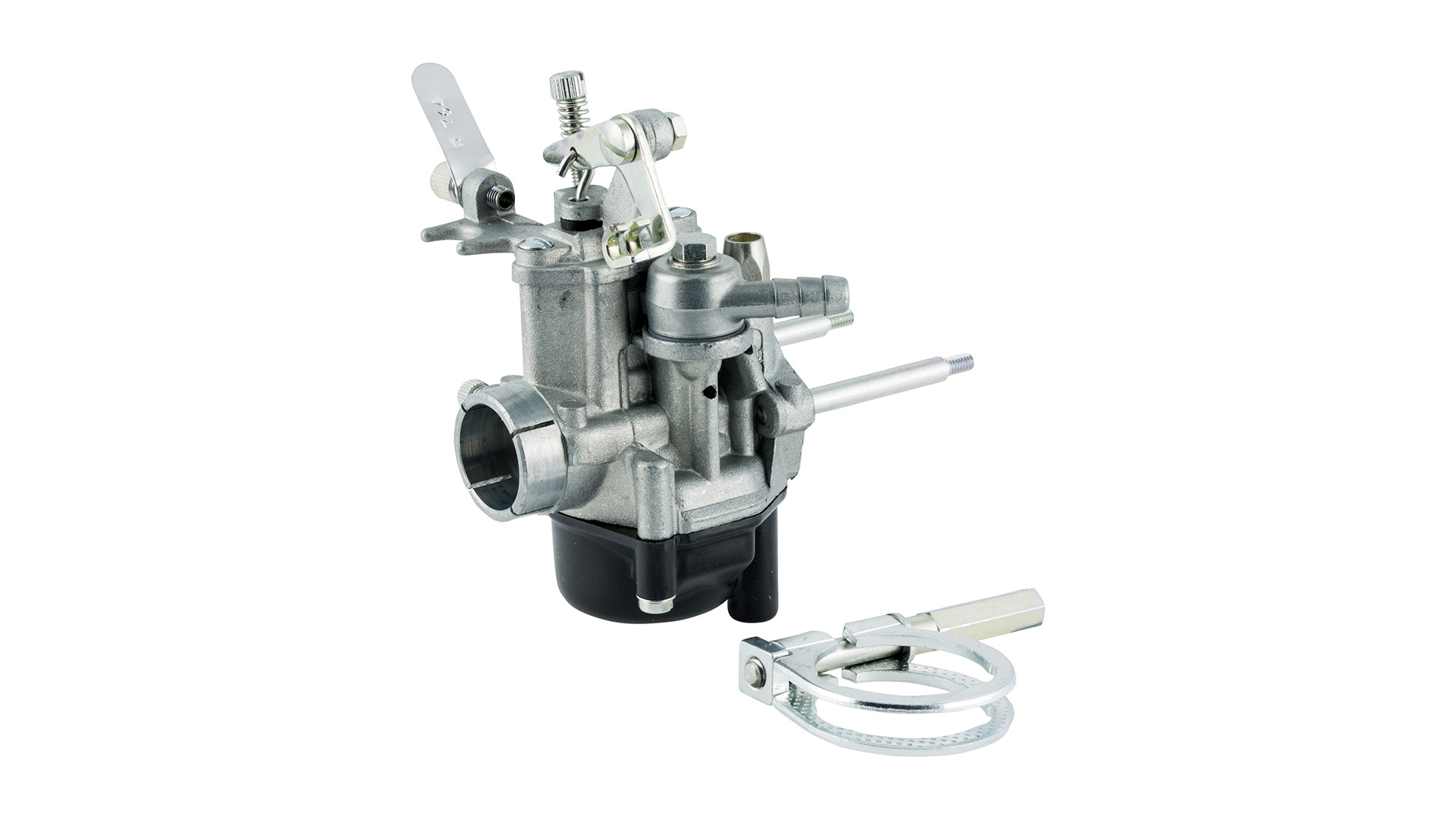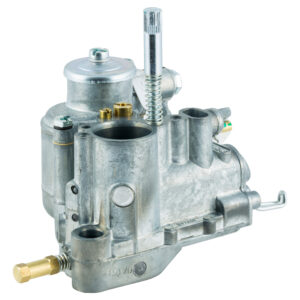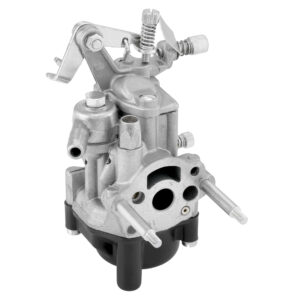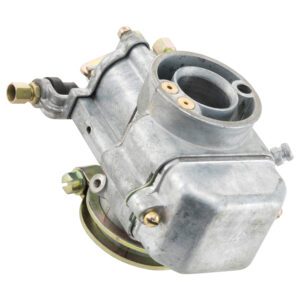Sitting on an original Vespa at a relaxed 50 km/h and driving towards the sun can be very relaxing on a day with little traffic. However, Vespa riders will know exactly when you are on the road with your Vespa and cars are constantly trying to overtake. Unfortunately, it often does not remain with the attempt and dangerous situations arise. Not for nothing, there is the desire to give his scooter a little more power, so as not to be considered an obstacle to traffic.
In these cases, people often go for a larger cylinder and a different exhaust, but without retuning the carburetor. This problem can eventually cause the engine, which is running too lean, to get a piston stick.
The different carburetor types
Even though the mode of operation – which we described in the first part of our carburetor series – is almost the same in all cases, there are different types of carburetors, which are precisely distinguished from each other in the following:
Type 1 – downdraft carburetor:
These types of carburetors, like DELL’ORTO’s SI series, are characterized by the fact that the air flows vertically. The widely used SI series was primarily installed in the PX series and is characterized by its reliability and durability.
Type 2 – drum carburetors:
PHB and SHB carburetors are examples of simply constructed drum carburetors. They are extremely reliable, easily adjustable and inexpensive to manufacture. Many two-wheelers are equipped with them at the factory.
Especially on the popular smallframe models, i.e. V50 and PK50, drum carburetors were installed. The most popular are the SHB 16.10, 16.15. and 16.16.
Type 3 – flat slide carburetors:
The flat slide carburetors were designed to minimize the cavity under the slide as well as the carb length. This avoids turbulence. This short length also favors a high resonance speed. They generally offer more power than barrel carburetors of the same size and can be tuned more precisely in some cases because, for example, they contain an additional secondary jet mixing tube. These have not been installed at the factory and are now primarily used in the tuning scene.
Purposes for carburetors
Determining the optimal carburetor size for a particular engine size or tuning level turns out to be a major challenge. In fact, it depends less on engine performance and more on how you want to use that performance:
Factory-installed carburetors:
If the goal is an economical and durable engine with an efficient air filtration system, the original carburetor or a suitably tuned carburetor that largely matches the engine in question is a sensible choice. For example, with a 133 cc cylinder on a 50 cc smallframe, the standard (19 or 20 mm) carburetor and intake manifold of the 125 cc smallframes can be used.
A standard carburetor won’t push the scooter to peak performance, but, for example, a 210 cc Malossi cylinder and a 24 SI carburetor will make a reliable setup that looks completely original and can still deliver over 20 horsepower. A comparatively small carburetor on a large capacity engine is usually easy to tune and therefore rewards with a good power curve.
Carburetor diameter of 24-30 mm
For scooters with a displacement of more than 125 cc, this range definitely offers a good compromise between performance, consumption and everyday usability. The larger the carburetor diameter is selected in relation to the engine displacement, the lower the vacuum effect that occurs at low engine speeds. This makes it more difficult to tune the carburetor to ensure good performance in all engine speed ranges and, for example, to avoid stalling at the fuel supply channels.
Carburetor diameters greater than 30 mm:
Unless the carburetor is significantly larger than the intake manifold on which it sits, a large carburetor will release significantly more power than a smaller one, especially in the medium and high RPM ranges of high-end engines. However, on the one hand, this can lead to insufficient mixture formation in the low rpm range, and on the other hand, it can increase fuel consumption, as more air is mixed with more gasoline.
In the case of a tuning measure, one should therefore not only deal with possible cylinder or exhaust types, but one should also keep a close eye on the tuning of the carburetor. Otherwise it can quickly happen that damage occurs, which leads to drivers overtaking with their original, untuned Vespas with a smile.
For all screwdrivers who are not sure which new carburetor or which main jet should be used, SIP Scootershop offers quick and expert support. So it remains guaranteed that one is really faster on the road – completely without breakdown.






